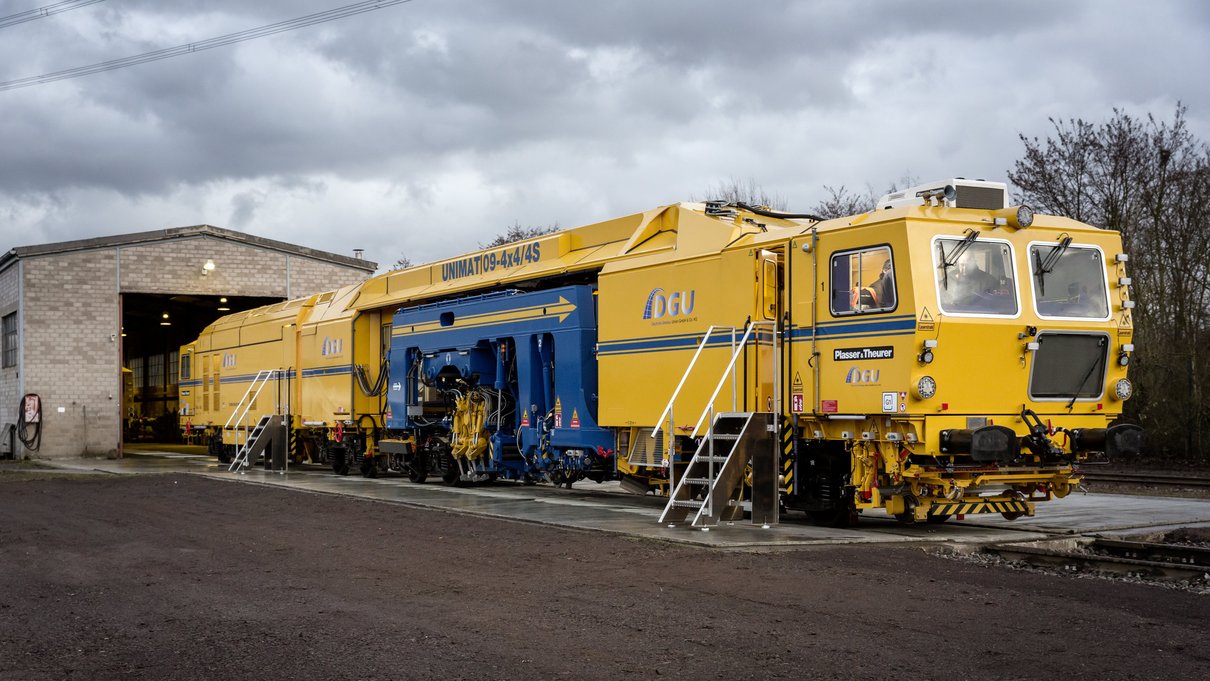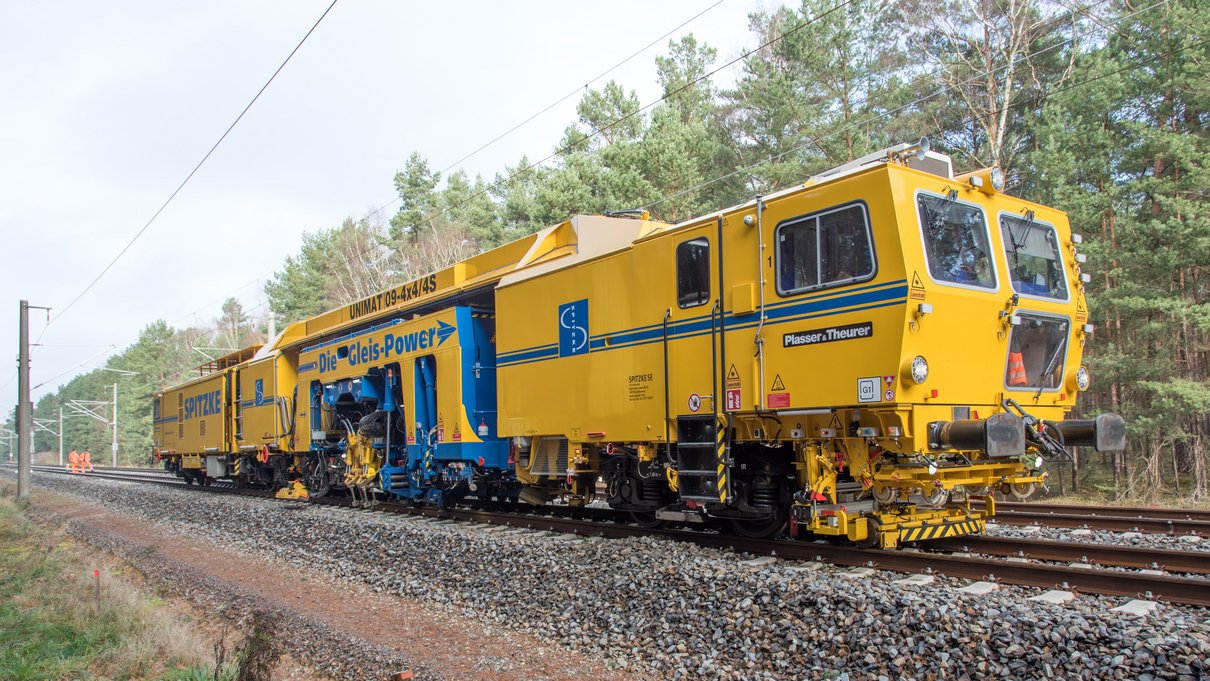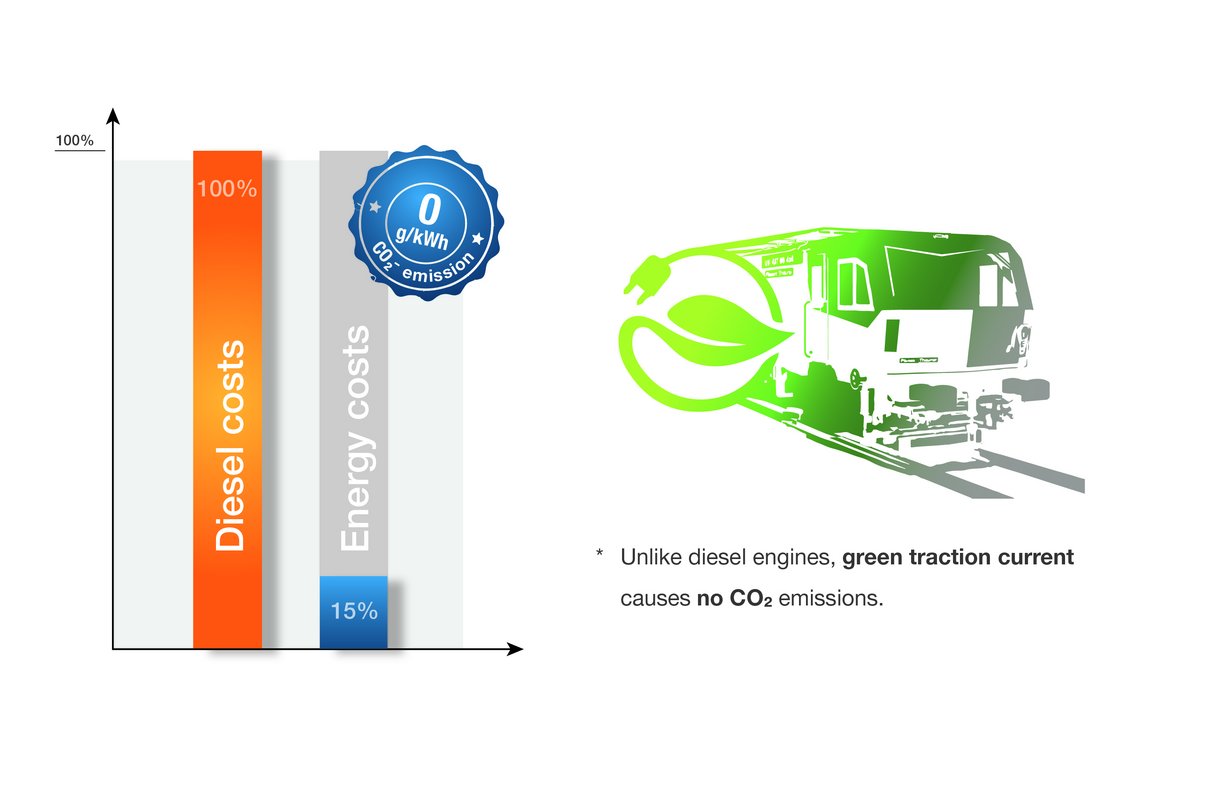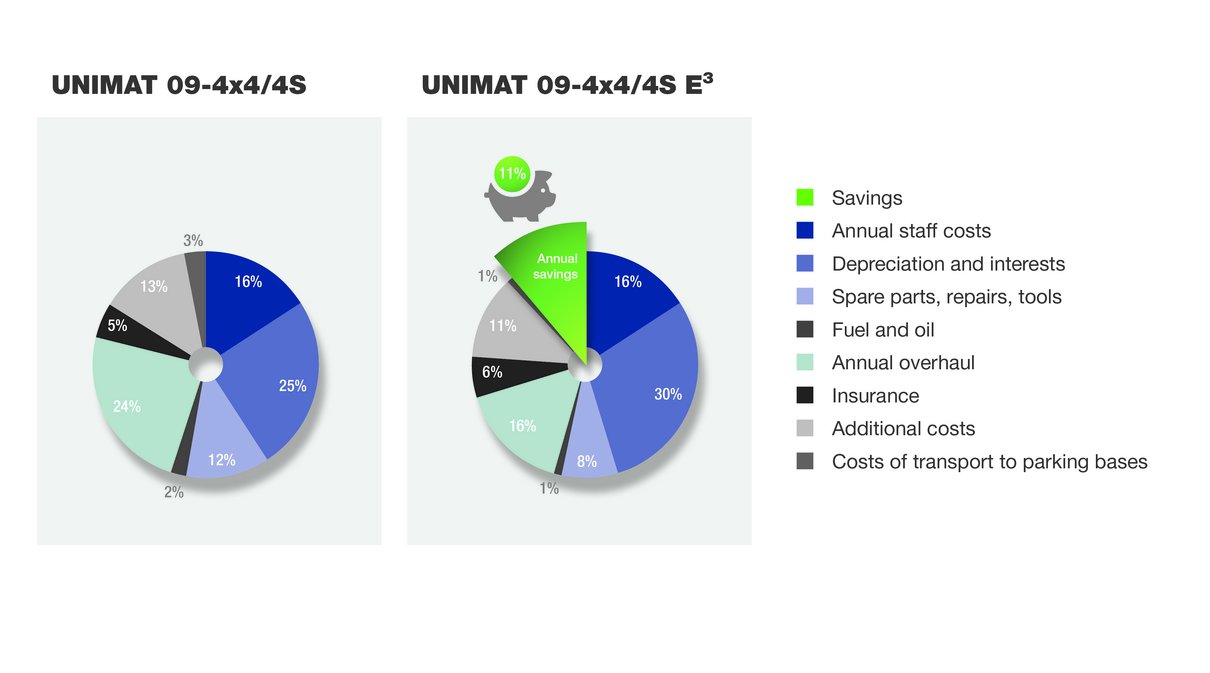Digitalisation, alternative drive systems and new manufacturing methods are finding their way into track maintenance. To meet the infrastructure requirements of our time, it takes more than mere maintenance machines. We need to develop a global view on track maintenance.
Download
Florian Auer
Infrastructure managers, track maintenance contractors and machine manufacturers are facing great challenges to make the railway fit for the future. New approval regulations require new machine concepts. Sustainable infrastructure management needs a holistic view of the railway system. Methods for optimised planning, implementing and managing of the rail infrastructure (BIM Building Information Modeling) are increasingly being used. Future machine requirements will go far beyond machine manufacture. Digital technologies and artificial intelligence enable machines to evolve from classic track maintenance machines to smart, fully networked maintenance machines. Smart machines are increasingly becoming sensors that supply data on the infrastructure.
The term PlasserSmartMaintenance describes the smart machine in the context of optimised fleet management and track maintenance. Latest technologies and artificial intelligence automate machine operation. In addition, “The Assistant” makes it possible to document track maintenance works almost fully transparently. Machines increasingly supply data. This provides a holistic view of the rail infrastructure for infrastructure management. Following this approach, classic measuring tasks, until now exclusively carried out by track inspection vehicles, are finding their way into Plasser & Theurer tamping machines. The SmartALC’s new AutoSync function makes it possible to locate spot faults quickly, avoiding separate track recording runs after track maintenance. Modern image processing systems allow for a quantum leap in track recording speeds: the outer track geometry can be determined at significantly increased speeds. The PlasserMotionDrive traction concept is yet another milestone in environmental protection. The machines from the Unimat 09-4x4/4S series are the first to use it. The E³ technology uses green traction current, which benefits the environment and enables significant cost reductions. Compared to conventional drive concepts, it allows for savings of more than EUR 200,000 per year. The machines from the Unimat 09-4x4/4S series are also the first to use Plasser & Theurer’s new platform strategy: PlasserModularCustomizing is the way into the future. Machines can be put together on a modular basis, making it possible to approve them more easily and in less time.
Individualisation through modularisation
Digital developments have been playing a vital role in our everyday life for some time. Today, for instance, most of us no longer stand in line to transfer money, but take care of our banking transactions conveniently online - regardless of opening times. The opportunities created by digitalisation are also shaping the rail infrastructure. Tracks are digitalised, machines become smart, works are automated and networked, and track recording is taken to a new level of transparency. The process reliability of machine fleets is increased. These developments improve the quality, increase the reliability and raise the availability of the rail infrastructure. In the early 1950s, the rail infrastructure was facing a similar situation, when the first self-propelled tamping machines brought about the first revolution in the mechanisation and automation of track maintenance.
Today, around 70 years later, the next revolution is about to take off. Plasser & Theurer has faced the challenges of our time and has further developed its on-track construction and maintenance machines, producing real all-rounders. Based on decades of experience in the production of track maintenance machines, the company uses modern sensor technology and artificial intelligence to offer the best solution for any track situation.
The EN 14033 approval process for auxiliary vehicles has become increasingly complex in recent years. The strategy must aim at ensuring the time-saving and cost-effective approval of the machines. Vehicle standardisation helps reach this aim as it significantly reduces the time needed for the design, documentation and assessment. The PlasserModularCustomizing initiative is the result of Plasser & Theurer’s decision to introduce a platform programme. New expansions are based on one and the same platform. Their technical design and quality comply with the machine’s initial approval. This is a major advantage as all railway testing has already been completed. The Unimat 09-4x4/4S series is the first to be available in the modular design. Four different trailer versions and three additional modules are available to adapt the main machine to make it suit the customer’s needs. A selection of drives and additional features allows for further individualisation.
The new design of the Unimat 09-4x4/4S series illustrates the path to modernisation. However, the new machine design goes beyond what can be seen. To many operators, the cabin is their second home. The increasing importance of a machine’s look, feel and ergonomic comfort comes as no surprise. The user-friendly operating switches and control panels are clearly arranged, simplifying machine control. With state-of-the-art computer systems, it has become possible to automate the operation of track maintenance machine to an increasing extent and to provide optimal support for machine operators. The operating environment helps combat fatigue and increases the quality of work. Machine operators benefit from these attractive and ergonomically optimised workplaces as they allow for increases in cost-efficiency and make it easier to recruit machine staff. Shorter training periods for the machines of the latest generation unlock further savings potential.
Environmental protection pays off
The EU Commission approved EUR 500 million in German public funding to promote energy efficiency in rail transport. Under the scheme, railway companies may be compensated for up to 50 % of expenses incurred from energy efficiency measures, such as the acquisition of modern energy-saving rolling stock including hybrid locomotives or automated solutions. This is one of many signs indicating the increasing importance of environmental protection for future decisions.
Plasser & Theurer has a clear answer to environmental protection: the E³ series. As early as in 2015, the company decided to add the E³ series to its machine portfolio. The success of the five machines from this series, which have already been put into operation and the two additional machines which are being produced, confirm the decision.
The E³ technology increases the efficiency of the machines, making it possible to use hybrid technology or battery technology. These technologies reduce fossil fuels and lubricants, thus contributing to the protection of the environment. According to an annual assessment carried out in Switzerland, the savings potential is EUR 135 per hour of operation. A study compared an 09-4x4/4S with hybrid technology and an 09-4x4/4S without hybrid technology. Taking into account the entire costs of operation and maintenance of the two machines, the study revealed that the E³ machines can produce a cost advantage of approx. EUR 200,000 per year. Additional features on the electrically powered E³ machines, such as the wear-resistant electric braking of the satellite, provide additional savings potential.
Until other technologies will have replaced the combustion engine, technical solutions for the reduction of diesel engine exhaust gas emissions are needed. That is why Plasser & Theurer developed the intelligent PlasserMotionDrive system. The new Unimat 09-4x4/4S combines the hydrostatic drive with a hydrodynamic drive. Depending on the track situation, between two and four powered axles accelerate the machine. The hydrostatic drive is the primary drive source at low speeds with high power requirements. As the speed increases, the hydrodynamic drive takes over as the main drive. As a result, the drive power of 600 kW is translated into the tractive power required to handle any track situation. The intelligent drive works efficiently, saving 9 % in fuel and reducing CO2 emissions.
In addition to the reduction of costs and exhaust gas emissions, the electrification of the drive shaft allows for noise reductions of more than 20 dBA. The reduced noise levels of the drive system and working units achieved through electrification also have a positive impact on the health and safety of the staff. Increasing awareness among the population and more stringent handling among politicians of the subjects of noise and exhaust gas emissions manifest themselves in an uncertain future of the operationally proven diesel engine, even in the area of rail traffic. Therefore, it is essential for non-electrified routes to develop new approaches and solutions.
The continuous working action of Plasser & Theurer’s tamping machines has been setting standards to this day. The machine travels forward continuously along the track while the work units operate in cyclic action between the tamping positions. Compared to cyclic action machines, this enables significant increases in output. This is how the Unimat 09-4x4/4S offers increased output while producing excellent quality. It optimises track possessions and quickly achieves a return on investment for the machine operators.

The continuous working action reduces wear on the brakes, cardan shafts and gearboxes. At the same time, it increases the machine’s output. The rotation speed modulation makes it possible to penetrate old and hardened ballast beds more easily and extends the service life of the work units.
Lüder Gerdtz, Deutsche Gleisbau Union
DGU
Germany
Their proven strengths make the continuous action tamping machines for tracks and turnouts stand out. Continuous forward motion and cyclic tamping for plain track and large parts of the turnout achieve sustainable results and lower wear, increase the working comfort for the operator and raise the working speed. The 1-sleeper tamping unit of the Unimat 09-4x4/4S ensures absolute flexibility and, if necessary, allows cyclic working action for complex turnouts. The rotation speed modulation is another key innovation. It allows the tamping tines to penetrate the ballast more easily, taking advantage of the physical properties of the ballast bed. This reduces the wear on these tools significantly.
Automation and networking
Systems that have until now only been used on state-of-the-art track inspection vehicles, are increasingly finding their way into track maintenance machines. From the integration of classic measuring tasks to new digital network models (BIM, digital twin, etc.), object recognition technologies and artificial intelligence, maintenance machines are becoming smart. Plasser & Theurer is going the way from a divided concept, a model separated by tasks, to an integrated concept, an integrated, holistic approach. In the past, the focus was on choosing the right machine. Now it is on using the right technologies.
PlasserSmartTamping – The Assistant is the innovation in track maintenance. The system is the first to enable the automated operation of tamping works in plain line tracks, turnouts and crossings. The assistance system relieves the operator when engaged in the demanding task of controlling the work units. At the same time, it improves the tamping quality. It shows the way into the future of track construction, to autonomous machines. Laser scanner units record the track and its surrounding, producing a digital 3D model. Actions to be carried out by the separate work units are implemented in real time on the machine and displayed to the operator whose main task is to monitor the process. A new recording module provides the infrastructure manager with absolute transparency. The tamping report documents all aspects relevant to quality. The system is in modular design. Its basic version comprises the control of the lifting and lining unit and the additional lifting unit. The control of the tamping unit can be added.
The market response speaks for itself. Since its presentation in Münster in 2017, six machines have already been sold, four of them to the infrastructure manager Infrabel.
The EM100VT testing vehicle makes visions become reality. Up to now, the outer track geometry was recorded either with the EM-SAT or with manually operated devices, at a measuring and working speed of no more than 5 km/h. Now, it is possible to record the outer track geometry at speeds of 100 km/h (and higher) thanks to the combination of the non-contacting track geometry measuring system with the new fixed-point measuring system. The system detects the reference points next to the track fully automatically and records them with high precision using image recognition systems. QR labels on the catenary masts make it possible to clearly identify and locate every fixed point. Intersecting the outer track geometry with geo-referenced point clouds produces a digital twin of the track.
The digital twin allows for digital line planning according to BIM. It will be used on the lines of DB (German Federal Railway) soon. In addition, the digital twin provides high-quality data, creating the basis for maintenance planning according to BIM. For the first time, infrastructure managers have digital access to all the complex information needed to plan maintenance operations and track inspections. Intersecting this information makes it possible to take data security and process reliability to a new level.
PlasserVirtualTrack makes it possible to immediately process absolute track geometry measurements via a cloud and send work orders to the SmartALC guiding computer connected to the tamping machine. Intersecting the track geometry data with the machine’s working parameters makes it possible to display the complex interdependencies between the infrastructure quality and the working parameters holistically in the cloud. Additional cloud service offers help infrastructure managers take maintenance management to the next level, without the need to recruit more staff. This adds value to sustainable rail infrastructure management.
The SmartALC ensures optimal track geometry quality. This proven feature has become indispensable to maintaining tracks and turnouts. New, innovative features improve quality and make it possible to reduce costs. The AutoSync function, for instance, allows for the automated location of track faults. Combining the AutoSync function and the Spot Tamping module (two features of the SmartALC) it is no longer necessary to search for track faults or carry out a separate measuring run prior to spot fault tamping. This enables time savings of more than 60 % compared to conventional methods.
Another feature is the new overlift function. It enables the system to automatically detect short-wave hollows in the track and to carry out a controlled overlift in the respective sections. The feature allows choosing between “differential overlift” and “design overlift” to suit various strategies. This method makes it possible to create planned wear reserves, strengthening the durability of the track geometry, particularly in track sections with a high level of wear on the ballast. If this method makes it possible to safe but one night-shift per year (carefully calculated) the resulting savings potential is approx. EUR 4,000.
Strong together
Complex technologies affect the infrastructure manager’s entire maintenance process chain. This is why putting new technologies on track requires sufficient time for their implementation. Therefore, cooperation and partnerships are crucial for the introduction of new, smart products. Putting the technologies into practical operation allows infrastructure managers to gain valuable experiences and lets these systems strengthen their maintenance strategy. Rete Ferroviaria Italiana (RFI), infrastructure manager of the Italian State Railway, is one of these partners. RFI decided to test the new fixed-point measuring system for its Unimat Combi 08-275 fleet. Equipped with measuring bogies, these specialised machines for spot fault repair are optimally suited for testing.
A partnership was also crucial for the development of the all-electric drive. Together with Molinari Rail, the development, construction, commissioning and testing of the new drive system was completed within one year. Both partners were happy to rise to and meet the challenges of the project in every respect due to the excellent cooperation. The result is a drive system with fully electrical traction on electrified lines, and diesel-electric traction on non-electrified lines.
Reliability, availability and process reliability when you need it
The work units are the core components of Plasser & Theurer machines. They determine not only the function of the machine but also its productivity and cost-efficiency. Before it is put into operation for the first time, a newly developed work unit must prove its efficiency and performance during stability tests and stress tests. The all-electric tamping unit was thoroughly tested. On a specially developed test rig, housed in a standard container, the work unit was put to the endurance test for four months. 1,000,000 tamping cycles were carried out under simulated counterpressure of the ballast. This corresponds to around 20,000 tamping cycles per day or 250,000 tamping cycles per month. During peak testing, the work unit was operated for 14 hours a day. However, the end of the unit’s service life is not even in sight.

Our first machine has already carried out 1,958,800* tamping cycles within four years. The rotation speed modulation minimises the wear on the work units, which carried out 1.3 million tamping cycles before requiring an overhaul for the first time.
Thomas Funke, Spitzke SE
* 31.08.2018
Spitzke Berlin
Germany
The experiences and feedback from practical operation prove the stability of work units made by Plasser & Theurer. Intensive research into the ballast bed results in ever-new developments. The rotation speed modulation contributes to minimising wear. When the tamping tine penetrates the ballast bed, the vibration frequency is increased from 35 Hz to 42 Hz, making use of the physical properties of the ballast bed. When compacting and squeezing the ballast, the optimal frequency of 35 Hz is used. During the entire tamping process, the ideal vibration amplitude of 5 mm is constantly maintained, generating an optimum compaction. Experiences gained by Spitzke confirm the positive effect of the rotation speed modulation on the service life of the tamping units. Their 09-4x4/4S has carried out more than 1.9 million tamping cycles since 2014. The work unit carried out 1.3 million tamping cycles before requiring an overhaul for the first time.
Service on track
A machine’s availability is what defines its value for contractors. Ensuring it is the top priority. A basic requirement to ensure a machine's availability is maintaining it carefully. The further developed parent brand Datamatic 2.0 includes the digital fleet management apps.
The MachineMaintenanceGuide (MMG) is a digital service booklet, which makes it possible to document service and maintenance works transparently at any time. It replaces printed service booklets, which got lost or were completed insufficiently. If nothing else is working any more, there is the SmartCatalog. This app helps find the right part among 60,000 original spare parts and supplies it to any place in the world. The MachineConditionObserver (MCO) cloud application displays the networked fleet data and provides reports suiting the customer’s specific requirements.
The “We care about your machine” initiative is setting a new standard in after-sales services. Expert maintenance, general overhauls and latest technologies, such as the rotation speed modulation, extend the service life of Plasser & Theurer tamping units significantly. Experiences gained in practical operation prove this. After-sales service packages, such as the B4 service package, suit the customers’ needs and help companies take full advantage of their machines’ potential, making them fit for the tough conditions on site. The B4 package comprises the complete overhaul of a tamping unit, including warranty coverage of twelve months or a maximum of 250,000 tamping cycles. In addition to checking the installation, service engineers will carry out annual inspections for a period of four years or until 1,000,000 tamping cycles have been completed. During these inspections, all components relevant to the tamping process will be checked and, if necessary, repairs will be recommended.
In every development and service, Plasser & Theurer focuses on the practical advantage for the customers, the real market situation and the environment. Ultimately, the top priority is to ensure the customers’ satisfaction and the products’ sustainable contribution to the railway system.

